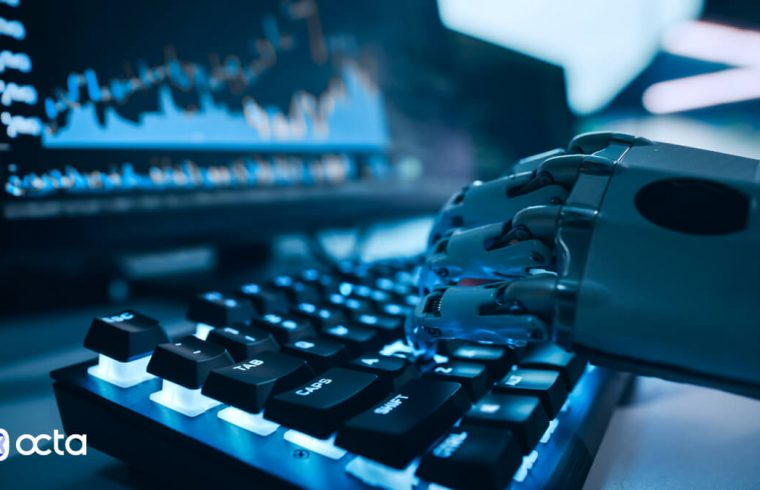Within this complex trading environment, a clear divide exists between traditional manual trading enthusiasts and proponents of a more modern, technology-driven approach: automated trading through the use of Forex trading robots, also known as Expert Advisors (EAs)
The Forex market, known for its volatility and dynamism, presents a myriad of opportunities and challenges for traders worldwide. Within this complex trading environment, a clear divide exists between traditional manual trading enthusiasts and proponents of a more modern, technology-driven approach: automated trading through the use of Forex trading robots, also known as Expert Advisors (EAs). This detailed exploration, presented by Octa, ventures into the intricate world of Forex trading robots, offering insights into their operational mechanisms, historical development, and the strategic benefits they bring to the trading table.
Demystifying Forex Trading Robots
Forex trading robots stand at the forefront of trading technology, offering an automated solution to manage financial transactions with precision and efficiency. These robots, governed by sophisticated algorithms, transcend the limitations faced by human traders, such as the need for rest and vulnerability to emotional decision-making. They tirelessly analyze market conditions, execute trades at optimal moments, manage account balances, and ensure the meticulous execution of trading orders, thus revolutionizing the trading experience.
The Evolutionary Journey of Trading Robots
The history of trading robots is as fascinating as their functionality, marked by significant advancements and innovations over the decades:
- First Generation: The dawn of trading robots can be traced back to the late 1960s and early 1970s, with the development of semi-automatic systems that relied on long-term trend analysis to inform traders of potential market shifts.
- Second Generation: The 1970s witnessed the advent of robots equipped with statistical algorithms, introducing a new era of trading automation with systems like ‘momentum’ and ‘reversal systems’, which enhanced market oversold conditions detection and deviation analysis for asset trading.
- Third Generation: This era saw the introduction of robots that focused on comprehensive data analysis to identify market patterns, offering predictions based on pattern changes rather than simple trend analysis.
- High-Frequency and AI-Driven Robots: The proliferation of high-speed internet and advancements in technology gave rise to high-frequency trading (HFT) robots, capable of executing an impressive number of transactions per second. The integration of Artificial Intelligence (AI) and Machine Learning (ML) technologies marked a pivotal moment, significantly simplifying the coding process and allowing robots to adapt by learning from a trader’s actions.
Choosing the Ideal Trading Robot
The quest for the perfect trading robot involves careful consideration of various factors to ensure alignment with your trading strategy and goals:
- Transaction Frequency: Understanding the implications of broker commissions on the profitability of strategies is crucial, especially for robots that execute a high volume of trades.
- Risk-Reward Ratio: Establishing clear profitability expectations helps in selecting robots that match your risk tolerance and financial objectives, from conservative strategies with minimal risk to aggressive approaches with potential for higher returns.
- Adaptability to Trading Conditions: It’s essential to recognize that robots perform differently under various market conditions. Identifying robots that align with your preferred trading style, whether trend-based or suited for flat markets, can significantly impact your trading success.
- Robustness and Testing: Emphasizing the importance of extensive testing, preferably on demo accounts, allows traders to assess a robot’s performance and reliability before deploying it in live trading scenarios.
The Advantages of Embracing Trading Robots
Trading robots offer unparalleled benefits, from their ability to operate non-stop, maximizing trading opportunities, to serving as educational tools for novices and as efficient strategy executors for experienced traders. Their role in automating complex trading processes not only enhances efficiency but also opens up new possibilities for profit generation in the Forex market.
Conclusion
The advent and evolution of Forex trading robots have significantly transformed the landscape of Forex trading, introducing a level of automation and efficiency previously unimaginable. As traders navigate through the complexities of the Forex market, understanding and leveraging the capabilities of these automated systems can lead to enhanced trading precision, strategic execution, and ultimately, greater profitability. With pioneers like Octa at the helm, offering cutting-edge trading solutions and comprehensive support, the future of Forex trading looks increasingly promising, promising a realm of opportunities for traders willing to embrace the technological advancements of trading robots.
About Octa
Since its inception in 2011, Octa has risen to prominence as a global leader in online trading services, offering traders commission-free access to international financial markets. With a vast clientele across over 180 countries and managing more than 42 million trading accounts, Octa is dedicated to empowering traders through a wealth of educational materials, including webinars, articles, and advanced analytical tools. The company’s commitment to excellence is evident in its numerous accolades and its proactive engagement in philanthropic endeavors, aimed at fostering educational advancements and providing urgent relief to communities in need.












